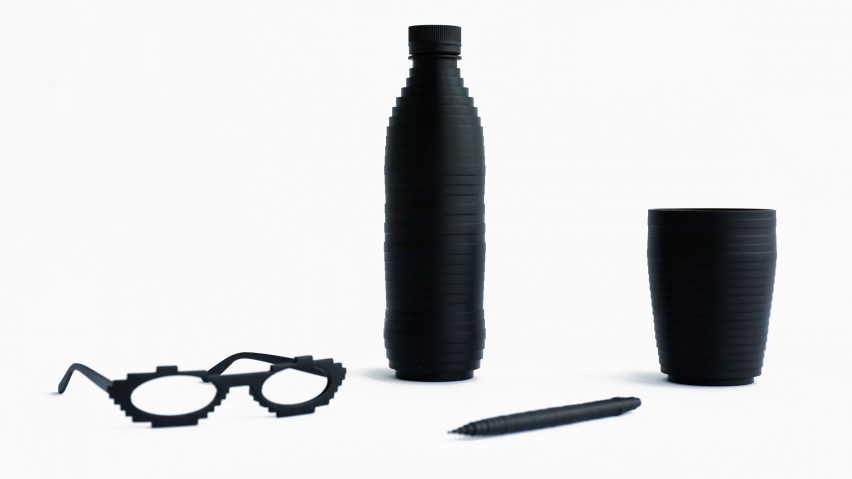Royal College of Art graduate Jiabao Zhang has taken the average dimensions of 50 cups, bottles, pens, light shades and reading glasses to create five standard items.
To create the normal items Zhang collected and measured 50 ready-made examples of five different objects – bottles, pens, light shades and reading glasses – that she deemed "largely anonymous, inexpensive and unexceptional".
She then used a systematic process to create a standardised version of each object from the average profile of the 50 collected pieces.
"These objects have a very simple and direct function, which often people do not think can be improved upon," said Zhang, who studied the Design Products masters course at the Royal College of Art.
Having collected the objects, she measured their dimensions and mapped them onto computer graphics software Rhino to create a three-dimension representation of each of the 250 profiles.
Using a tool called Tweencurve, she then averaged each object to work out the standard dimensions of each item group.
The resultant normal cup, bottle, pen, light shade and a pair of reading glasses were created with black colour and have a ridged texture.
Zhang chose to join the points plotted of the average items in a ridged form rather than connecting them to make a curved form.
"By collecting, measuring and averaging, the final profile looked like a messy mistake rather than a form that had been created through a complex process," said Zhang.
"I decided to modify them by only using the dots on those lines to connect them in a step-like style," she explained.
When conceiving the project, Zhang was influenced by product designer Dieter Rams and his minimalist design of Braun products.
"He established the purity of minimal form that could apply, for instance, to all Braun products by avoiding superfluous detail and providing clarity of function," she said.
Zhang's final project attempts to follow this methodology. "It represents a new contemporary aesthetic in its minimal complexity," she explained.
Zhang's project was on show at the Royal College of Art as part of their annual degree show. Other graduate projects include a set of tools that inform animals of potential human threats and a series of ceramics glazed with human urine.

